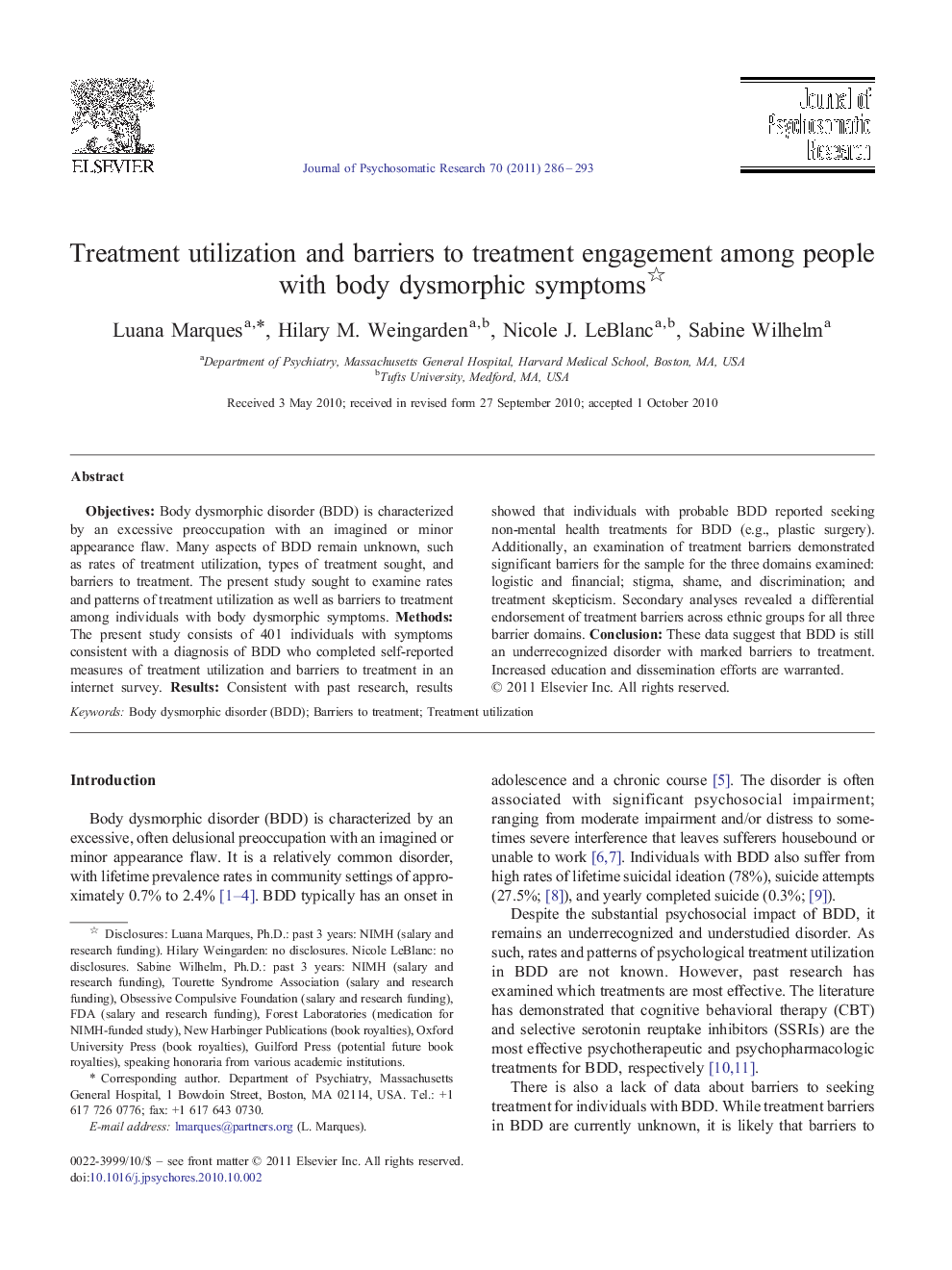| Article ID | Journal | Published Year | Pages | File Type |
|---|---|---|---|---|
| 949865 | Journal of Psychosomatic Research | 2011 | 8 Pages |
ObjectivesBody dysmorphic disorder (BDD) is characterized by an excessive preoccupation with an imagined or minor appearance flaw. Many aspects of BDD remain unknown, such as rates of treatment utilization, types of treatment sought, and barriers to treatment. The present study sought to examine rates and patterns of treatment utilization as well as barriers to treatment among individuals with body dysmorphic symptoms.MethodsThe present study consists of 401 individuals with symptoms consistent with a diagnosis of BDD who completed self-reported measures of treatment utilization and barriers to treatment in an internet survey.ResultsConsistent with past research, results showed that individuals with probable BDD reported seeking non-mental health treatments for BDD (e.g., plastic surgery). Additionally, an examination of treatment barriers demonstrated significant barriers for the sample for the three domains examined: logistic and financial; stigma, shame, and discrimination; and treatment skepticism. Secondary analyses revealed a differential endorsement of treatment barriers across ethnic groups for all three barrier domains.ConclusionThese data suggest that BDD is still an underrecognized disorder with marked barriers to treatment. Increased education and dissemination efforts are warranted.
